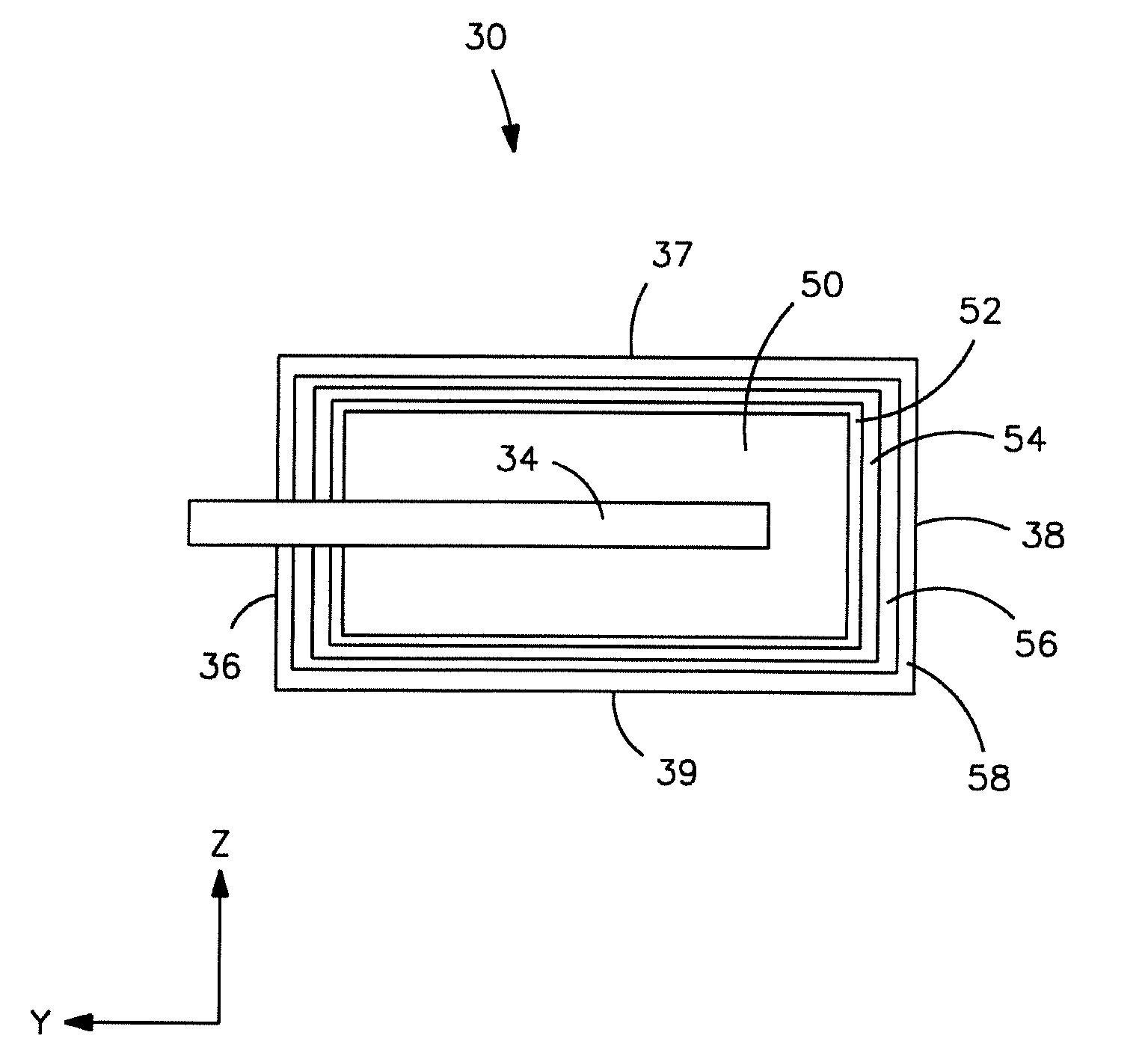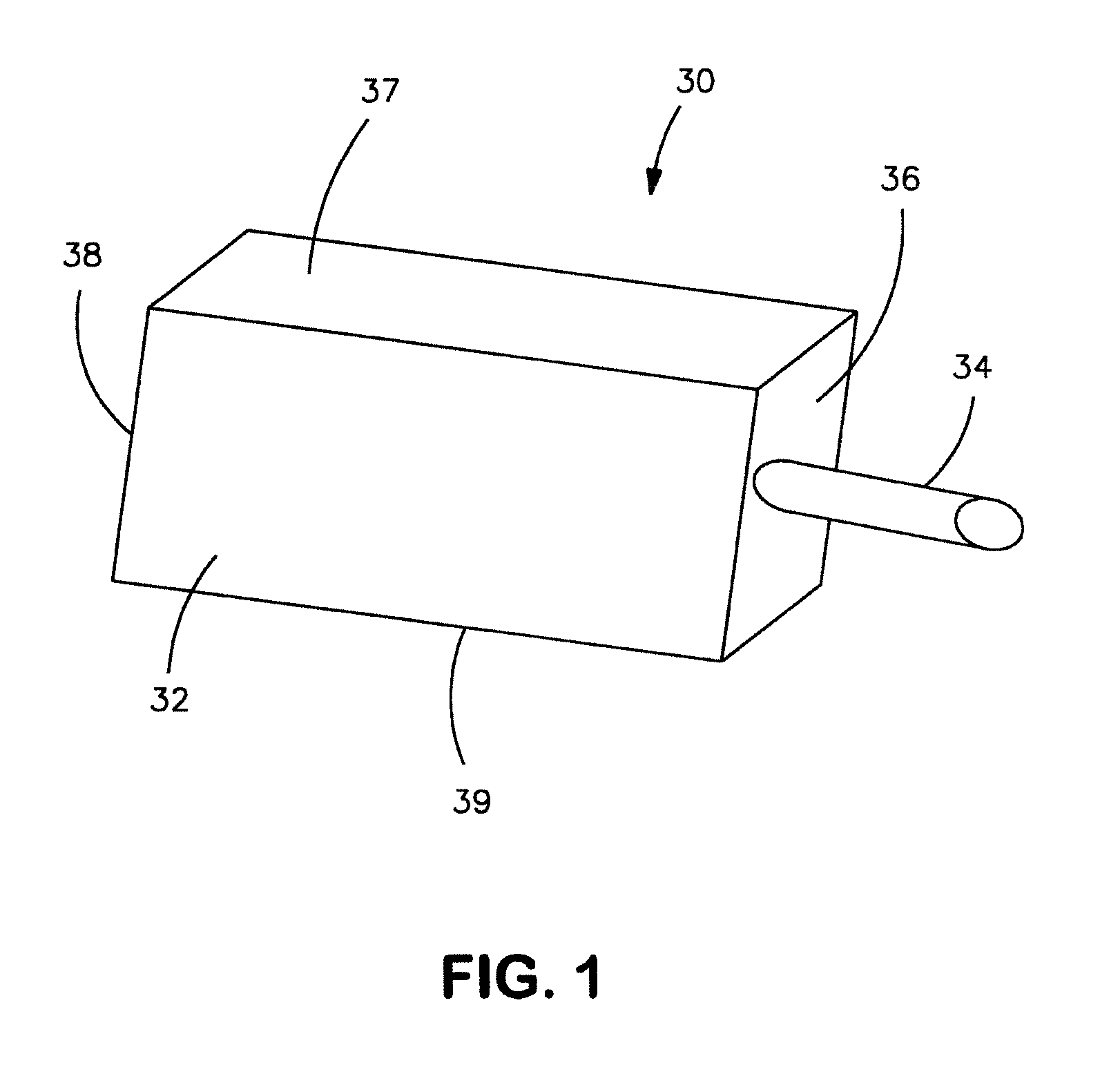Electrolytic capacitor anode treated with an organometallic compound
an organometallic compound and electrolytic capacitor technology, applied in the field of electrochemicals, can solve problems such as leakage current instability at accelerated temperature and voltage load
- Summary
- Abstract
- Description
- Claims
- Application Information
AI Technical Summary
Benefits of technology
Problems solved by technology
Method used
Image
Examples
example 1
[0038]80,000 μFV / g niobium oxide powder (HC Starck) was pressed into pellets and sintered to form a porous electrode body. Anodic oxidation was then carried out in an aqueous solution containing phosphoric acid and varying concentrations of N-2-(aminoethyl)3-aminopropylmethyldimethoxysilane (0%, 0.2%, 1%, and 5%) at ambient temperature. The anodic oxidation was done first galvanostatically to the desired voltage and than potentiostatically. The conductivity of the electrolyte with supporting electrolyte was 4.5 mS / cm. The voltage was chosen to obtain a targeted capacitance of 100 μF. After anodic oxidation, the pellets were coated with a manganese dioxide layer, a graphite coating and a silver coating. The finished parts were completed by conventional assembly technology to the B case (EIA 3528). The V-A characteristics of a capacitor were then measured. The results are shown in FIG. 5.
example 2
[0039]Anode pellets were formed as described in Example 1, except that anodic oxidation occurred in an aqueous solution that contained 1% N-2-(aminoethyl)3-aminopropylmethyidimethoxysilane at temperatures of 22° C. and 60° C. The V-A characteristics are shown in FIG. 6.
example 3
[0040]Anode pellets were formed as described in Example 1, except that anodic oxidation occurred in a solution containing water and ethanol solvents and 1% N-2-(aminoethyl)3-aminopropylmethyldimethoxysilane. The V-A characteristics are shown in FIG. 7.
PUM
| Property | Measurement | Unit |
|---|---|---|
| wt. % | aaaaa | aaaaa |
| density | aaaaa | aaaaa |
| density | aaaaa | aaaaa |
Abstract
Description
Claims
Application Information
 Login to View More
Login to View More - R&D
- Intellectual Property
- Life Sciences
- Materials
- Tech Scout
- Unparalleled Data Quality
- Higher Quality Content
- 60% Fewer Hallucinations
Browse by: Latest US Patents, China's latest patents, Technical Efficacy Thesaurus, Application Domain, Technology Topic, Popular Technical Reports.
© 2025 PatSnap. All rights reserved.Legal|Privacy policy|Modern Slavery Act Transparency Statement|Sitemap|About US| Contact US: help@patsnap.com



